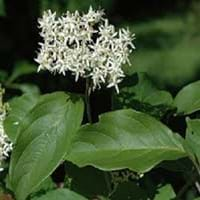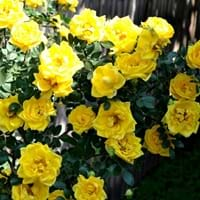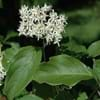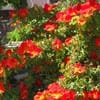Life Span
Perennial
Perennial
Origin
United States, Northeastern United States, Mid-Atlantic United States, Southeastern United States
Eastern Europe, Western Asia
Types
not available
Rosa Harisons Yellow, Rosa Persica
Number of Varieties
Not Available
Habitat
Banks, Lake Sides, Shores of rivers or lakes
gardens, Pastures, Prairies, Terrestrial, Tropical regions
USDA Hardiness Zone
5-8
3-8
Sunset Zone
3b, 4, 5, 6, 7, 8, 9
1a, 1b, 2a, 2b, 3a, 3b, 4, 5, 6, 7, 8, 9, 10, 11, 12, 13, 14, 15, 16, 17, 18, 19, 20, 21, 22, 23, 24
Habit
Oval or Rounded
Oval or Rounded
Flower Color
Ivory
Yellow
Flower Color Modifier
Not Available
Not Available
Fruit Color
White
Non Fruiting Plant
Leaf Color in Spring
Green, Dark Green
Not Available
Leaf Color in Summer
Dark Green
Not Available
Leaf Color in Fall
Dark Green, Brown, Dark Red
Not Available
Leaf Color in Winter
Not Available
Light Green
Leaf Shape
Acuminate
Pinnate
Plant Season
Summer, Fall
Summer, Fall
Sunlight
Full Sun, Partial Sun, Partial shade
Full Sun, Partial Sun
Type of Soil
Clay, Loam, Sand
Loam, Sand
The pH of Soil
Acidic, Neutral, Alkaline
Acidic, Neutral
Soil Drainage
Average
Well drained
Bloom Time
Early Summer
Early Summer, Summer, Late Summer, Early Fall
Tolerances
Wet Site
Drought
Where to Plant?
Ground, Pot
Ground, Pot
How to Plant?
Cuttings, Divison, Stem Cutting
Grafting, Stem Planting, Transplanting
Plant Maintenance
Medium
Medium
Watering Requirements
Average Water Needs
Form a Soil ring to water efficiently, Requires regular watering, Water twice a day in the initial period, Water when soil is dry
In Summer
Lots of watering
Lots of watering
In Spring
Moderate
Moderate
In Winter
Average Water
Average Water
Soil pH
Acidic, Neutral, Alkaline
Acidic, Neutral
Soil Type
Clay, Loam, Sand
Loam, Sand
Soil Drainage Capacity
Average
Well drained
Sun Exposure
Full Sun, Partial Sun, Partial shade
Full Sun, Partial Sun
Pruning
Remove damaged leaves, Remove dead branches, Remove dead leaves
Prune if you want to improve plant shape, Remove damaged leaves, Remove dead leaves, Remove deadheads, Shape and thin as needed
Fertilizers
All-Purpose Liquid Fertilizer
All-Purpose Liquid Fertilizer, organic fertlizers
Pests and Diseases
Red blotch
Aphids, Bacterial Diseases, Mites, Slugs
Plant Tolerance
Drought
Drought
Flower Petal Number
Single
Not Available
Edible Fruit
No
Not Available
Foliage Texture
Medium
Not Available
Foliage Sheen
Matte
Not Available
Attracts
Birds
Not Available
Allergy
Unknown
no allergic reactions
Aesthetic Uses
Ground Cover, Wild gardens, Woodland margins
Beautification, Bouquets
Beauty Benefits
Not Available
Not Available
Environmental Uses
Air purification
Air purification
Medicinal Uses
Not Available
No Medicinal Use
Part of Plant Used
Not Available
Flowers
Other Uses
Acts as a natural source of rain water for birds and insects.
Showy Purposes, Used as Ornamental plant
Used As Indoor Plant
No
No
Used As Outdoor Plant
Yes
Yes
Garden Design
Foundation, Hedges, Mixed Border, Screening, Wind Break
Container, Cutflower, Feature Plant, Foundation, Mixed Border
Botanical Name
CORNUS amomum
Rosa foetida
Common Name
silky cornel
Austrian briar, Persian yellow rose, Austrian copper rose
In Hindi
Kinnikinnick
Persian Yellow Rose
In German
Kinnikinnick
Persian Yellow Rose
In French
Kinnikinnick
Persian Yellow Rose
In Spanish
Kinnikinnick
Persian Yellow Rose
In Greek
Kinnikinnick
Persian Yellow Rose
In Portuguese
Kinnikinnick
Persian Yellow Rose
In Polish
Kinnikinnick
Persian Yellow Rose
In Latin
Kinnikinnick
Persian Yellow Rose
Phylum
Magnoliophyta
Not Available
Class
Magnoliopsida
Not Available
Family
Cornaceae
Rosaceae
Clade
Angiosperms, Asterids, Eudicots
Angiosperms, Eudicots, Rosids
Tribe
Not Available
Not Available
Subfamily
Not Available
Rosoideae
Number of Species
Not Available
Not Available
Season and Care of Kinnikinnick and Persian Yellow Rose
Season and care of Kinnikinnick and Persian Yellow Rose is important to know. While considering everything about Kinnikinnick and Persian Yellow Rose Care, growing season is an essential factor. Kinnikinnick season is Summer and Fall and Persian Yellow Rose season is Summer and Fall. The type of soil for Kinnikinnick is Clay, Loam, Sand and for Persian Yellow Rose is Loam, Sand while the PH of soil for Kinnikinnick is Acidic, Neutral, Alkaline and for Persian Yellow Rose is Acidic, Neutral.
Kinnikinnick and Persian Yellow Rose Physical Information
Kinnikinnick and Persian Yellow Rose physical information is very important for comparison. Kinnikinnick height is 180.00 cm and width 180.00 cm whereas Persian Yellow Rose height is 70.00 cm and width 100.00 cm. The color specification of Kinnikinnick and Persian Yellow Rose are as follows:
Kinnikinnick flower color: Ivory
Kinnikinnick leaf color: Green and Dark Green
Persian Yellow Rose flower color: Yellow
- Persian Yellow Rose leaf color: Not Available
Care of Kinnikinnick and Persian Yellow Rose
Care of Kinnikinnick and Persian Yellow Rose include pruning, fertilizers, watering etc. Kinnikinnick pruning is done Remove damaged leaves, Remove dead branches and Remove dead leaves and Persian Yellow Rose pruning is done Prune if you want to improve plant shape, Remove damaged leaves, Remove dead leaves, Remove deadheads and Shape and thin as needed. In summer Kinnikinnick needs Lots of watering and in winter, it needs Average Water. Whereas, in summer Persian Yellow Rose needs Lots of watering and in winter, it needs Average Water.





